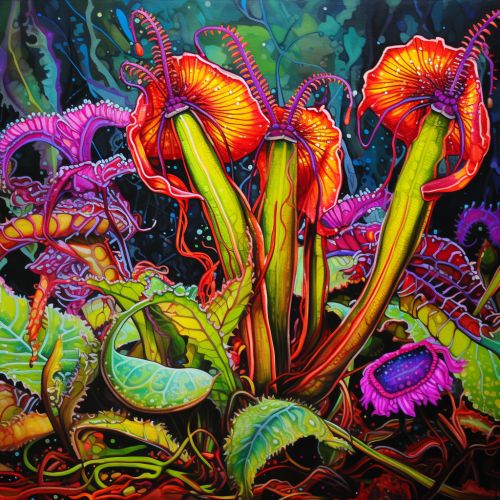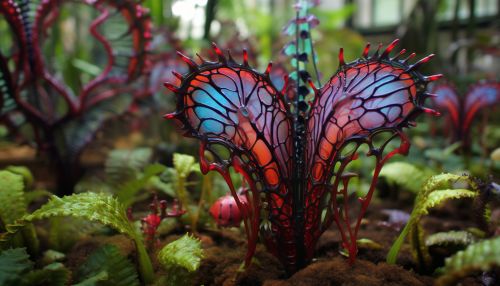Carnivorous plants
Introduction
Carnivorous plants are a unique group of plants that have adapted to grow in places where the soil is thin or poor in nutrients, especially nitrogen, such as acidic bogs and rock outcroppings. These plants obtain some or most of their nutrients from trapping and consuming animals or protozoans, typically insects and other arthropods. Carnivorous plants have attracted the attention of plant biologists and the public alike for their active nature and unusual feeding habits.


Classification and Distribution
Carnivorous plants are found all over the world in a variety of habitats. They are most common in bogs, swamps, and other wet, nutrient-poor environments. The largest concentration of carnivorous plant species is found in the United States, Australia, and South Africa.
There are about 630 known species of carnivorous plants, belonging to five orders of flowering plants. These orders are Caryophyllales, Ericales, Lamiales, Oxalidales, and Poales. The families that contain the most species are the Droseraceae (sundews and Venus flytraps), Nepenthaceae (tropical pitcher plants), and Sarraceniaceae (American pitcher plants).
Adaptations
Carnivorous plants have evolved multiple times from unrelated species, all adapting similar mechanisms to cope with their harsh environments. These adaptations include modified leaf structures and specialized mechanisms for trapping prey.
Trapping Mechanisms
Carnivorous plants use various methods to capture their prey. These methods can be broadly classified into five basic types: pitfall traps, flypaper traps, snap traps, bladder traps, and lobster-pot traps.
1. Pitfall traps (pitcher plants): The plant forms a deep cavity filled with digestive liquid. Insects are attracted to the cavity by nectar and visual lures, then slip on the rim and fall into the liquid where they are digested.
2. Flypaper traps (sundews and butterworts): The plant's leaves secrete sticky mucilage that traps insects. Once an insect is stuck, the leaf slowly wraps around the prey and digests it.
3. Snap traps (Venus flytrap): This type of trap is hinged and snaps shut when an insect lands on it. The trap closes rapidly, in less than a second, trapping the insect inside.
4. Bladder traps (bladderworts): These underwater or soil-dwelling plants have small bladder-like traps that suck in tiny organisms. The trapdoor is triggered when prey touches sensitive hairs, causing a rapid change in pressure and sucking the prey in.
5. Lobster-pot traps (corkscrew plants): These plants have long, tubular channels lined with hairs that point inward and downward. Prey enters the trap, lured by the scent of nectar, but cannot escape due to the direction of the hairs.
Nutrient Acquisition and Digestion
Carnivorous plants have evolved to derive some or most of their nutrients from prey rather than from the soil. The process of digestion in these plants is quite complex and involves both mechanical and chemical processes.
When an insect is trapped, the plant will start to secrete digestive enzymes, much like those found in the stomach of an animal. These enzymes break down the soft tissues of the insect, releasing the nutrients contained within. The plant then absorbs these nutrients through special cells on the surface of the trap.
In some cases, the plant may also rely on symbiotic bacteria to aid in digestion. These bacteria live in the digestive fluids of the plant and help to break down the prey.
Conservation
Many species of carnivorous plants are threatened by habitat loss, pollution, and over-collection. Conservation efforts are underway to protect these unique and fascinating plants. In some areas, laws have been enacted to protect carnivorous plants and their habitats.
